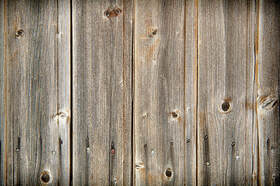Pressure treated fencing Richmond Hill, ON
We have many clients who wouldn't choose anything different than the natural, sturdy and beautiful look of a wooden fence. Perhaps vinyl or composite fencing don't provide the natural look they desire, or those options are outside of their budget. And likely metal or chain link fencing don't provide the necessary privacy or look they need for their property.
With untreated wood, however, there are some challenges, notably the susceptibility for the wood to rot and therefore be easily cracked due to our harsh Canadian weather. So it's not an exaggeration to say that untreated lumber doesn't fare well in Canada, and you're looking at a much shorter lifespan. Here is where pressure treated fencing comes in. These special planks are made of wood that have been put in a depressurized chamber to essentially fill in the porous wood with preservative chemicals. The effect is a wood that resists damage due to rot, increasing the product's longevity at an affordable price. Here are some common FAQs: 1) How long does pressure treated fencing last? If properly maintained and regularly inspected, barring any natural disaster, you're looking at a ten to fifteen year lifespan. 2) Do pressure treated fence boards shrink? |
Yes, this is an eventuality with all pressure treated fencing. As wood typically expands in hot weather and shrinks in the cold, compensations can be made by slightly reducing the gap size between the pressure treated boards, for example.
3) Do pressure treated fence panels need to be painted?
Due to the finish of the wood, painting a pressure treated fence is not advised, as the paint is unlikely to adhere. An alternative would be to stain the wood, which can penetrate somewhat beyond the surface, with the colour lasting longer.
4) Do pressure treated fencing need to be sealed?
This is an option but a very good one. Even though the lumber has been chemically treated to withstand insect infestation and moisture to a certain degree, think of sealing as a reinforcement, typically done after the fence has been installed.
If you have any questions about pressure treated fencing, which is typically done with a soft wood like pine, do not hesitate to contact us at Richmond Hill Fence to discuss the best option for your space, budget and requirements.
3) Do pressure treated fence panels need to be painted?
Due to the finish of the wood, painting a pressure treated fence is not advised, as the paint is unlikely to adhere. An alternative would be to stain the wood, which can penetrate somewhat beyond the surface, with the colour lasting longer.
4) Do pressure treated fencing need to be sealed?
This is an option but a very good one. Even though the lumber has been chemically treated to withstand insect infestation and moisture to a certain degree, think of sealing as a reinforcement, typically done after the fence has been installed.
If you have any questions about pressure treated fencing, which is typically done with a soft wood like pine, do not hesitate to contact us at Richmond Hill Fence to discuss the best option for your space, budget and requirements.


